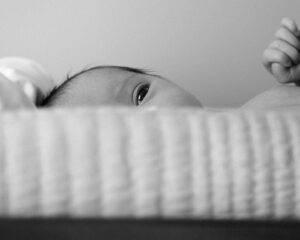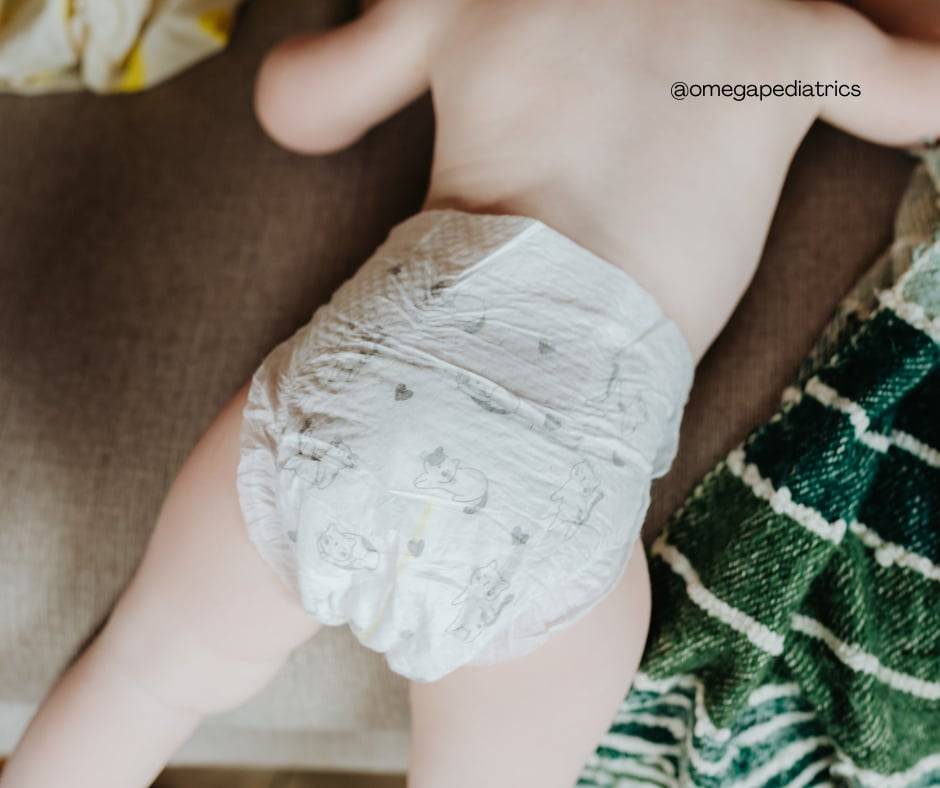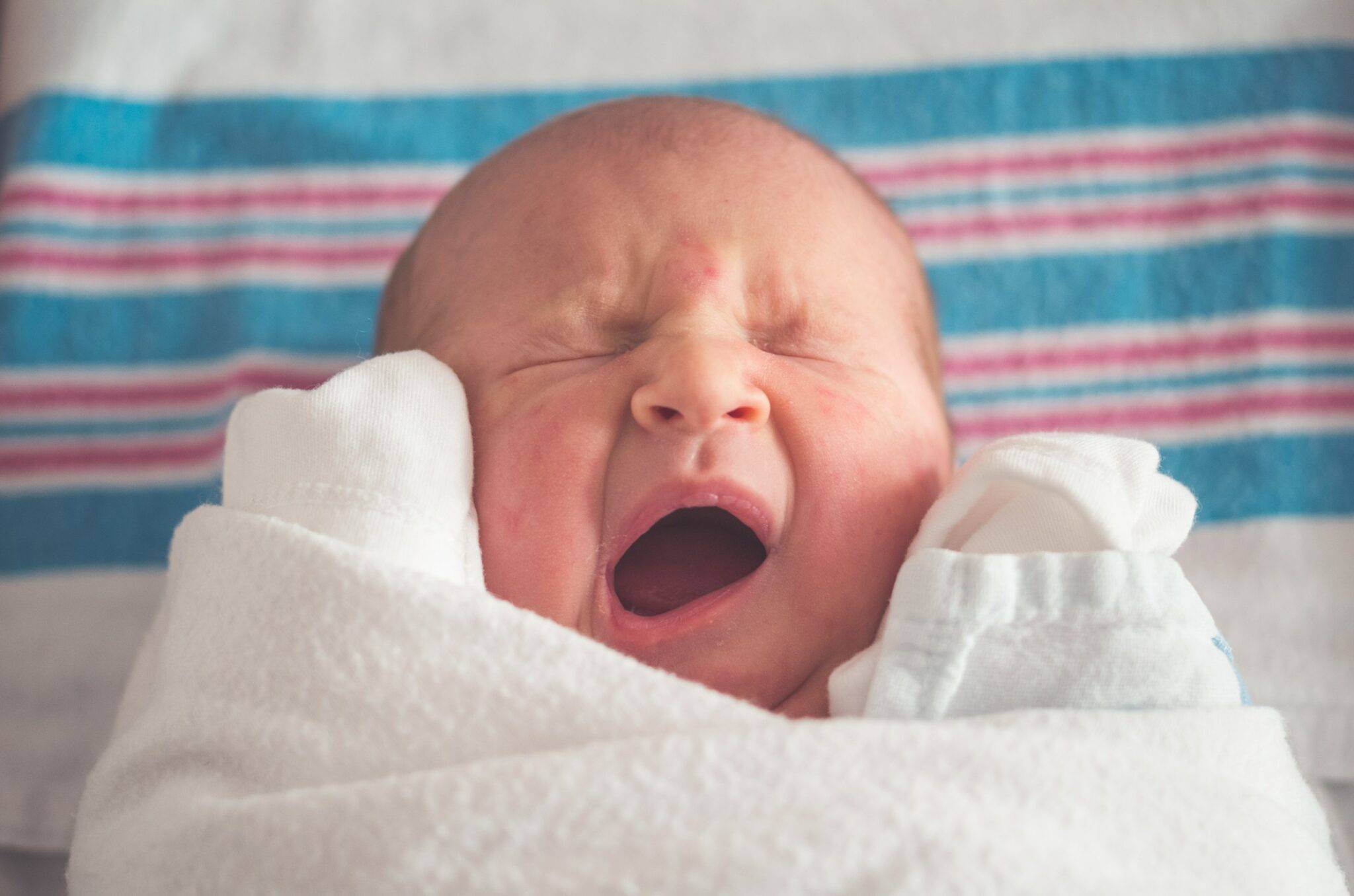Welcoming a newborn into your home is an exciting and transformative experience, often accompanied by questions and decisions about their care. One common question many new parents have is, “How long can my baby safely use a bassinet?”
Understanding the proper use of a bassinet, including when and why to transition your baby to a crib, is crucial for ensuring their safety and comfort. This blog post aims to provide comprehensive guidance on this topic, helping you make informed decisions for your baby’s well-being.
What is a Bassinet?
A bassinet is a small bed specially designed for infants from birth to about four months old. They are typically smaller, more portable, and cozier than cribs, making them a popular choice for new parents. These small beds often have features like rocking mechanisms, built-in storage, and even vibration settings to soothe your baby.
Benefits of Using a Bassinet
Proximity and Convenience
These infants’ beds are designed to be placed close to your bed, making nighttime feedings and comforting your baby easier. This proximity can be particularly beneficial for breastfeeding mothers, allowing for more rest and less disruption during the night.
Portability
Most of these infants’ beds are lightweight and easy to move from room to room, providing flexibility and convenience. This portability means you can keep your baby close during the day, no matter where you are in the house.
Cozy Environment
The smaller, enclosed space of a bassinet can make a newborn feel more secure, mimicking the snugness of the womb. This can be particularly soothing for many infants, helping them sleep better in the early weeks.
When to Transition from Bassinet to Crib
While bassinets offer numerous advantages, they are only suitable for a limited time. Several factors influence when it’s time to move your baby to a crib:
1. Age and Developmental Milestones
Typically, newborns outgrow their bassinets by four to six months of age. However, some babies may need to transition sooner if they reach certain developmental milestones, such as rolling over, pushing up on their hands and knees, or sitting up unassisted. These milestones indicate increased mobility, which can make their special bed unsafe.
2. Size and Weight Limits
Each bassinet comes with specific size and weight restrictions. Following the manufacturer’s guidelines is crucial, as exceeding these limits can compromise their safety and stability. Most of these support babies up to 15 to 20 pounds, but this can vary, so always check the manual.
3. Space Constraints
As newborns grow, they need more space to move and stretch out. If you notice they look cramped or touching the sides of their small bed, it’s time to transition to a crib.
Safety Considerations
Safety is paramount when deciding how long to use a bassinet. Here are key safety considerations to keep in mind:
4. Firm, Flat Surface
Ensure the mattress is firm and flat, as soft surfaces can increase the risk of Sudden Infant Death Syndrome (SIDS). Always use the mattress provided by the manufacturer.
5. No Loose Bedding
Avoid using loose blankets, pillows, or toys in the sleep area. These items can pose suffocation hazards. Instead, use a fitted sheet and dress your baby in appropriate sleepwear to keep them warm.
6. Stability
Ensure the bassinet is stable and secure. Avoid placing it on elevated surfaces or near stairs. Check for any signs of wear and tear, and make sure all parts function correctly.
Signs Your Baby is Ready for a Crib
Recognizing the signs that your baby is ready for a crib can make the transition smoother. Here are some indicators that it’s time to move on from the bassinet:
1. Active Sleeping Patterns
If your baby starts rolling over, pushing up, or sitting up, it’s a clear sign that they need a more spacious and secure sleep environment. Babies become more active and mobile as they grow, and these movements can make a bassinet unsafe.
Rolling over leads to situations where your baby end up in positions that aren’t in the confined space of a bassinet. They learn to push up or sit up, and the risk of tipping or falling out of the bassinet increases. With its larger size and higher sides, a crib provides a safer environment for these new activities and reduces the risk of accidents.
2. Overcrowding
If your baby looks cramped in the bassinet or frequently bumps at the sides, they need more room to sleep comfortably. As they grow, they need more space to stretch out and move around while sleeping. A cramped space is uncomfortable and also poses risks.
Limited space leads to restricted movement, disturbing their sleep, and making them restless. If your baby’s head or limbs frequently touch the sides of the bassinet, it’s a sign that the bassinet is becoming too small for them.
Transitioning to a crib will give your baby ample space to move freely and sleep in many positions, contributing to better sleep quality and overall comfort.
3. Disrupted Sleep
Sometimes, disrupted sleep can signal that your baby has outgrown the bassinet. It could be time for a change if your baby starts waking up more frequently or seems uncomfortable. Babies express their discomfort through changes in their sleep patterns.
If your baby used to sleep well in the bassinet but suddenly begins waking up more often, it could be due to the limited space or discomfort from being in a too-small sleeping area. They might be unable to stretch out or turn over comfortably, leading to restless sleep.
Observing your baby’s sleep behavior and noting any significant changes can help you identify when to transition to a crib. A crib can provide the additional space needed for your baby to sleep more soundly and comfortably, leading to longer and more restful sleep periods.
4. Reaching Size and Weight Limits
Most bassinets come with specific size and weight limits, typically around 15 to 20 pounds. Exceeding these limits can compromise the bassinet’s stability and safety. If your baby is approaching or has exceeded these limits, it’s essential to transition to a crib to ensure their safety.
5. Increasing Mobility
Beyond just rolling over and sitting up, as babies grow, they become more curious and eager to explore their surroundings. They might start trying to grab onto the sides of the bassinet or even attempt to pull themselves up.
These activities make a bassinet unsafe and indicate that your baby needs a more secure environment, like a crib, to accommodate their growing mobility.
6. Signs of Crib Readiness
Some babies naturally show signs that they are ready for a crib. They’re interested in exploring a larger sleeping space or appear more settled when placed in a crib for short periods during the day. By paying attention to these subtle cues can help you determine the right time to transition.
Transitioning to a Crib: Tips and Techniques
When transitioning your baby from a bassinet to a crib, it’s important to make the transition as smooth as possible. Here are some tips to ease the process:
1. Start with Naps
Begin by placing your baby in the crib for daytime naps. This gradual approach helps them adjust comfortably to the new environment without disrupting their night sleep routine.
2. Create a Familiar Environment
Ensure the crib environment is as comforting and familiar as the bassinet by using the same bedding. To make the crib feel more familiar, use the same sleep sack or swaddle your baby is accustomed to in the bassinet. You can also place the crib in the same room as the bassinet initially to minimize the change in surroundings.
3. Maintain a Consistent Bedtime Routine
A consistent bedtime routine can provide comfort and predictability for your baby. Activities like a warm bath, gentle rocking, or reading a bedtime story can help signal that it’s time to sleep, regardless of where they are sleeping.
4. Be Patient
Understand that the transition may take some time, and it’s normal for your baby to adjust to their new sleeping environment. Be patient and supportive during this period. Provide extra comfort and reassurance.
Common Concerns and Questions
What if my baby prefers the bassinet?
Some babies may show a preference for the bassinet because of its coziness. In this case, try to recreate a similar environment in the crib by using sleep sacks and maintaining a consistent bedtime routine.
Can I keep the bassinet for daytime naps?
Once your baby has transitioned to the crib for nighttime sleep, it’s best to use the crib for naps, too. This consistency helps your baby associate the crib with sleep and ensures they get used to their new sleep environment more quickly.
How can I ensure my baby is comfortable in the crib?
To ensure your baby’s comfort in the crib, make sure they are dressed appropriately for the room temperature, use a firm mattress, and maintain a calm and quiet sleep environment. A white noise machine can also help drown out any background noise.
Transition Your Baby from Bassinet to Crib Smoothly

Determining how long your baby can safely use a bassinet involves considering their age, developmental milestones, size, and weight. While bassinets offer numerous benefits in the early months, transitioning to a crib is necessary for your baby’s safety and comfort as they grow.
Pay attention to the signs and take a gradual approach, ensuring a smooth and successful transition to a crib. This provides a safe and comfortable sleep environment for your baby. Every baby is unique, and the transition process may vary.
Trust your instincts, and consult your pediatrician—the competent and trusted provider, Omega Pediatrics. Always prioritize safety in every decision. Happy parenting!





